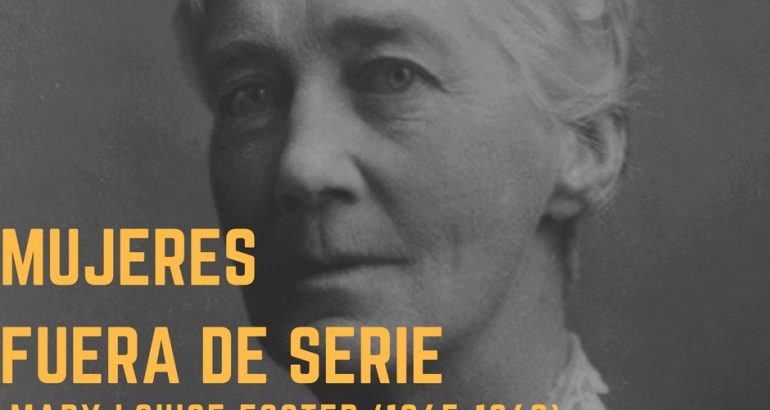
OUTSTANDING WOMEN: MARY LOUISE FOSTER
Mary Louise Foster (1865-1960)
Dr. Foster was one of the teachers who came to Spain through the International Institute and who contributed the most to the educational exchange between Spain and the United States. Her stay in Madrid as director of the International Institute between 1920 and 1922 had a great impact on the scientific training of young Spanish women, since under her direction the first laboratory was built in the Residencia de Señoritas. The success of this initiative meant a new stay for Dr. Foster in Madrid, financed jointly by the Board for Further Studies and the International Institute, in order to design a new and larger laboratory. These new facilities were inaugurated in 1928 with the name of "Foster Laboratory" as María de Maeztu explained that day and was reflected in the report of the Board for Expansion of Studies of 1928:
We are gathered here to dedicate our new chemistry labs. They have been built with American money and the courses have been founded and organized by an American. In the United States the custom is to perpetuate the memory of such services by giving the name of the founder to the building. Thus, so that those who will succeed you in the years to come will become familiar with the name of this teacher, this laboratory will be called 'Foster Laboratory'.
Dr. Foster maintained a close link with Spain, especially during the 20s and 30s. In addition to being director of the International Institute in Madrid, she was a member of its Corporation and her affinity with the environment of the Institución Libre de Enseñanza was reflected in the different articles in which he disseminated the efforts that this organization was carrying out in the educational field. She maintained a close relationship with her Spanish students, to whom she offered valuable support. It was through Dr. Foster that young Spanish scientists such as Dorotea Barnés or Rosa Herrera obtained scholarships to continue their studies in the US.
Mary Louise Foster had completed her undergraduate studies at Smith College (1891) and her Ph.D. at the University of Chicago (1914). After graduating from Smith College she spent two courses at MIT (1893-1895) where she worked with Ellen Swallow Richards (MIT's first female student). She then moved to New York City to work at Columbia University and teach chemistry at Woman's Medical College of New York (1904-1905). She joined the Department of Chemistry at Smith College in 1905 where she was appointed Full Professor of Biochemistry in 1908. In that position she played an important role in introducing the study of Biochemistry, a subject she first taught in the 1916-17 course. and until his retirement in 1933.
Pinion Pillar
References:
Burk, L. (2007). "Biochemistry at Smith College: A Short History" (PDF). smith.edu.
Magallón, Carmen, “The Foster Laboratory of the Residencia de Señoritas. The relations of the JAE with the International Institute for Girls in Spain and the training of young Spanish scientists”. Asclepius. Journal of the History of Medicine and Science, 2007, vol. LIX, no. 2, July-December, pp. 37-62
Zulueta, Carmen de, One hundred years of education of Spanish women. History of the International Institute. Madrid. Castalia, 1992.



